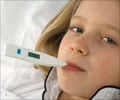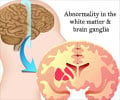Most of the 50 million people around the world, including many of the nearly three million people in the United States who suffer from epilepsy do not have access
Most of the 50 million people around the world, including many of the nearly three million people in the United States who suffer from epilepsy do not have access to the new ways of diagnosing and managing the condition.
According to Steven C. Schachter, M.D., president of the American Epilepsy Society (AES), there is an enormous gap between what is currently being done and what is possible today to lessen the burden of epilepsy around the world. The consequences are not insignificant, as uncontrolled epilepsy leads to a diminished quality of life, and a greater risk of disability and death.Patrick Kwan, MD, PhD, of the Chinese University of Hong Kong, and Eric R. Hargis, president and CEO of the Epilepsy Foundation, joined Dr. Schachter to address the treatment gap in epilepsy at the AES 63rd Annual Meeting held here at the Hynes Convention Center. Dr. Kwan participated in an international committee of epilepsy experts that has developed the first ever global, consensus definition of refractory epilepsy. The newly developed definition will be presented during a special symposium on Tuesday. (ILAE Symposium: Redefining Treatment Resistant Epilepsy)
Citing data from the World Health Organization (WHO), Dr. Schachter says, "An astonishing three-quarters of the global population with epilepsy get no treatment whatsoever for their seizures. While most patients here in the U.S. receive some form of therapy, there are racial, ethnic, and socioeconomic disparities in access to treatment, surgery in particular, and significant under-diagnosis and treatment of associated complications of mood, memory and cognition." (Platforms B.03)
In a study scheduled for presentation on Sunday, for example, researchers at a specialized epilepsy center will report on eighty-three pediatric epilepsy patients referred to the center for pre-surgical evaluation. Some of these patients had been previously evaluated but remained untreated for complications secondary to their epilepsy. (Abstract 2.169)
Researchers in another study to be reported here have found there continues to be a major gap averaging seventeen years between the diagnosis of epilepsy and pre-surgical evaluation at a specialized epilepsy center in the U.S.. Professional guidelines recommend that patients be evaluated as potential surgery candidates after failing appropriate trials of first-line antiepileptic drugs, trials typically taking less than two years. The research team says reasons for the wide gap in time to treatment need to be studied. (Abstract 1.114 and Platform C.09)
"Even with the plethora of epilepsy therapies now available," Dr. Schachter says, "the CDC estimates that at least 45 percent of people with epilepsy here in the U.S. continue to experience seizures. Complete freedom from seizures is not a possibility for everyone who has epilepsy. But it is important for patients with continuing seizures and their healthcare providers to make every effort toward that goal."
Advertisement
Dr. Kwan notes that this recommendation is followed less often in practice than actually observed. The care that is provided is further complicated by a variety of standards for defining refractory epilepsy which can also contribute to the sub-optimal care that some epilepsy patients are getting.
Advertisement
The new definition is but one of many measures focused on the healthcare community that is needed to assure patients get state-of-the-art care. Beyond this there is much that people with epilepsy themselves can do to improve the care they receive, according to Mr. Hargis. "Many patients feel that what they experience from epilepsy and its treatment is 'as-good-as-it-gets'. A perception they may get from healthcare providers. Programs are needed to inform patients that there are solutions to their feelings of depression and the treatment of side effects they experience. And, one of the keys is better communication with their doctors."
A number of recent studies, including research supported by the Epilepsy Foundation, have found that mood disorders and drug toxicity affect quality of life of patients, more than the frequency or severity of their seizures. "Educational programs are needed that encourage healthcare providers to question patents and to offer appropriate remedial options for reducing co-morbidities and the impact of the disorder itself," Hargis says.
The heavy toll that undiagnosed, untreated and sub-optimally treated epilepsy imposes on the millions of people with epilepsy in the U.S. and around the globe has led the World Health Organization to raise the international campaign against the disorder to the highest level within its organization. Closing the wide gap in treatment will require major efforts on the part of governments, healthcare communities, researchers, and affected individuals and families everywhere. But, with people's lives at stake, the epilepsy representatives say, there is no other course.
Source-Eurekalert
RAS















